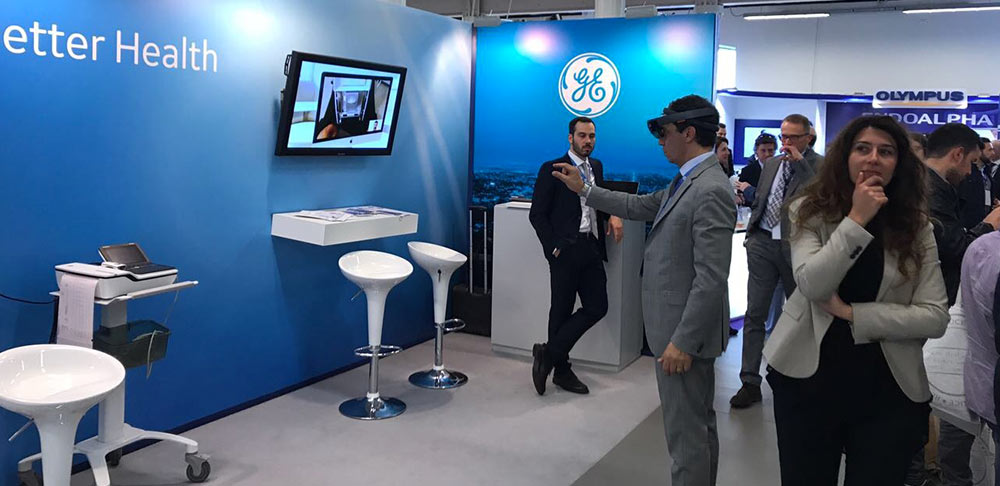Beyond reality. Augmented reality (AR) in health environment for more efficient surgical, diagnostic, training performances. The XVII National Conference of the Associazione Italiana Ingegneri Clinici (AIIC) has taken place in Genoa from 6th to 8th April; the meeting , within which several workshops and training courses, has faced the several aspects of a main theme, the technological innovation in the healthcare field, from a strongly patient-oriented point of view.
Hence, innovation and concreteness have been the two basic principles of the conference, also shared by Predict, Apulian company working in the field. The partnership with General Electric Healthcare has allowed the development of a new vision – it must be said – for the healthcare technology of the future. General Electric Healthcare, thanks to the OPTIP technology by Predict, has implemented a new way to assist the customers in everyday work: as explained by the company itself, “the augmented reality brings the company and its experts in your room when needed”. Contrary to what one can imagine, the presence of the assistant is not physical but virtual. As illustrated just during the National AIIC conference, OPTIP uses the HoloLens viewers, state-of-the-art tool launched by Microsoft: a sort of helmet endowed with sensors, cameras, microphone and speakers. HoloLens is based on the concept of augmented reality (AR, normally).
AR allows inserting in the given environment some virtual elements, in the form of holograms projected by viewers, as integration of everything that is already physically present in the environment that remains fully visible to the operator. This does not happen in virtual reality, other sector in large development that indicates the interaction of the user with an entirely rebuilt environment. Both technologies have been already applied in the healthcare field, with fruitful results that give good hopes for the future.
In particular, research is mainly focused on three spheres: training, surgery and rehabilitation. For the first we have to consider the exemplary work of Shafi Ahmed, British surgeon and innovator, that has concretely shown, in two different occasions, how virtual reality and augmented reality can support the training of young surgeons more than some live operations: assisting virtually to the removal of a liver cancer in 2014 has meant for thirteen thousand students from all over the world the possibility to see with the eyes of the surgeon (impossible in the operating theatre) and interact with Ahmed making questions in real time.
Over the educational scopes, the use of augmented reality in the operating theatre is useful for the intervention itself. The improvement of the performances of the surgeon, the realization of live consultations with other colleagues and the 3D visualization of the instrumental tests performed during the preoperative phase are only some of the application on which the research is focused.
If in the first two cases it is the physician who interacts directly with technology, there is a phase in which the protagonist is the patient: physical and psychic rehabilitation. It has already been shown, for example, how virtual reality can help in fighting the eating disorders: centre of excellence in this field is the Istituto Auxologico of Milan, that thanks to the Cave project has shown to be a pioneer of cybertherapy in Italy.
The synergy between healthcare and virtual reality is winning, with a way opened towards the future.

